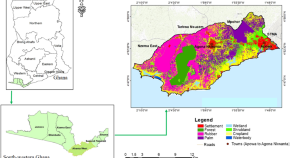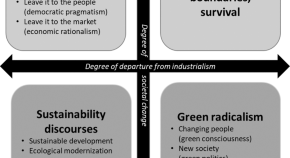
Collection
Special Issue: The Use of Semi-Quantitative Methods to Unravel Landscape Discourses and Imaginaries for Integrated Landscape Approaches
- Submission status
- Open
- Open for submission from
- 01 November 2022
- Submission deadline
- 15 June 2024
Editors
-
Mirjam A.F. Ros-Tonen
Mirjam A.F. Ros-Tonen, University of Amsterdam, Netherlands.
Mirjam Ros-Tonen is an associate professor at the Department of Planning, Human Geography and International Development Studies of the University of Amsterdam. Her research focuses on integrated landscape approaches, inclusive value chain collaboration and knowledge co-creation, which she combines into a holistic approach towards inclusive and integrated forest and landscape governance. She thereby aims to merge political-ecological analyses with the more solution- and practice-based integrated landscape approaches.
-
James D. Langston
James D. Langston, University of British Columbia, Canada
James Langston is a lecturer at the University of British Columbia. His teaching and research centre on the patterns and relationships that shape development outcomes. He is dedicated to furthering the agenda of embedded science. He is interested in how people are affected by decisions and narratives that are endogenous vs exogenous to their landscapes. His goal is to increase the likelihood that spatial development initiatives lead to more inclusive, sustainable and prosperous futures for people and nature.
-
James Reed
James Reed, Centre of International Forestry Research (CIFOR), Indonesia.
James Reed is a scientist in the research theme ‘Governance, Equity, and Wellbeing’ at the Centre of International Forestry Research (CIFOR), Indonesia. He is interested in inter- and transdisciplinary research approaches that attempt to better understand the dynamics and potential synergies and trade-offs within tropical social-ecological systems.
Articles (7 in this collection)
-

-
Participatory and Spatially Explicit Assessment to Envision the Future of Land-Use/Land-Cover Change Scenarios on Selected Ecosystem Services in Southwestern Ghana
Authors (first, second and last of 5)
- Evelyn Asante-Yeboah
- HongMi Koo
- Christine Fürst
- Content type: OriginalPaper
- Open Access
- Published: 28 February 2024

-
Boundary Spanning Methodological Approaches for Collaborative Moose Governance in Eeyou Istchee
Authors (first, second and last of 6)
- Nathan A. Badry
- Gwyneth A. MacMillan
- Murray M. Humphries
- Content type: OriginalPaper
- Open Access
- Published: 25 December 2023

-
Linking Forest Ecosystem Services to the SDGs: Semi-quantitative Mapping of Perceptions towards Integrated Decision-making
Authors
- Myriam Pham-Truffert
- Jean-Laurent Pfund
- Content type: OriginalPaper
- Open Access
- Published: 04 December 2023

-
Stakeholder Perceptions on Landscape Governance in Northern Ghana: A Q-Study to Identify Common Concern Entry Points for Integrated Landscape Approaches
Authors
- Eric Rega Christophe Bayala
- Content type: OriginalPaper
- Open Access
- Published: 30 September 2023

-
Balancing Ambitions and Realities: Stakeholder Perspectives on Jurisdictional Approach Outcomes in Sabah’s Forests
Authors (first, second and last of 6)
- Julia Su Chen Ng
- Colas Chervier
- Alain Karsenty
- Content type: OriginalPaper
- Published: 04 September 2023
- Pages: 259 - 273

-
The Role of Multistakeholder Platforms in Environmental Governance: Analyzing Stakeholder Perceptions in Kalomo District, Zambia, Using Q-Method
Authors
- Freddie S. Siangulube
- Content type: OriginalPaper
- Open Access
- Published: 20 March 2023



